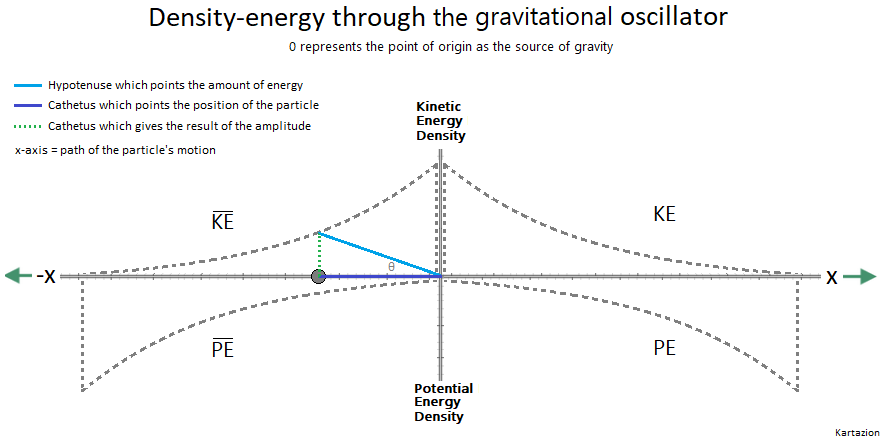Potential energy is a fundamental concept in physics that describes the stored energy of an object based on its position or state. It is a type of energy that an object possesses due to its position relative to other objects, or due to its internal properties. Understanding how to calculate potential energy is essential for solving various problems in physics and engineering. In this blog post, we will explore different methods and formulas to calculate potential energy in various scenarios. We will cover topics such as calculating potential energy with mass and height, converting potential energy from kinetic energy, potential energy on slopes, and special cases such as pendulums, springs, electrons, and capacitors. We will also provide practical examples to solidify your understanding. So, let’s dive in and explore the fascinating world of potential energy!
Detailed Steps to Calculate Potential Energy
How to Calculate Potential Energy with Mass and Height
The most common method to calculate potential energy involves using the mass of an object and its height relative to a reference point. The formula to calculate potential energy in this scenario is:
![]()
Where:
– represents the potential energy
– denotes the mass of the object
– represents the acceleration due to gravity )
– signifies the height of the object above a reference point
To understand this formula better, let’s consider an example. Suppose we have a 2 kg book placed on a shelf that is 3 meters above the ground. We can calculate the potential energy of the book using the formula:
![]()
Solving this equation yields a potential energy of 58.8 Joules.
How to Calculate Potential Energy from Kinetic Energy

In certain cases, you may need to calculate potential energy using kinetic energy. The equation for kinetic energy is:
![]()
Where:
– ![]() denotes the kinetic energy
denotes the kinetic energy
– ![]() represents the mass of the object
represents the mass of the object
– ![]() signifies the velocity of the object
signifies the velocity of the object
To calculate potential energy from kinetic energy, we can use the principle of conservation of energy, which states that energy can neither be created nor destroyed, only transferred between different forms. Hence, the total mechanical energy remains constant.
If an object is at the highest point of its motion, its kinetic energy is zero. At this point, all the initial kinetic energy is converted into potential energy. Therefore, the potential energy can be calculated as:
![]()
Let’s consider an example. Suppose a 0.5 kg ball is thrown vertically upwards with an initial velocity of 10 m/s. At the highest point, the ball’s velocity becomes zero, and its kinetic energy is converted entirely into potential energy. Using the formula, we can calculate the potential energy:
![]()
Solving this equation gives us a potential energy of 25 Joules.
How to Calculate Potential Energy on a Slope
When dealing with objects on inclined surfaces, calculating potential energy requires considering the component of gravity perpendicular to the slope. The formula to calculate potential energy on a slope is:
![]()
Where:
– ![]() represents the potential energy
represents the potential energy
– ![]() denotes the mass of the object
denotes the mass of the object
– ![]() represents the acceleration due to gravity
represents the acceleration due to gravity
– ![]() signifies the height of the object above the reference point on the slope
signifies the height of the object above the reference point on the slope
– ![]() represents the angle of the slope with respect to the horizontal
represents the angle of the slope with respect to the horizontal
Let’s consider an example to illustrate this concept. Suppose a 3 kg object is placed on a slope that is inclined at an angle of 30 degrees with respect to the horizontal. The height of the object above the reference point on the slope is 2 meters. We can calculate the potential energy using the formula:
![]()
Solving this equation yields a potential energy of 98.04 Joules.
How to Calculate Potential Energy without Mass or Height
In some cases, you may need to calculate potential energy without knowing the mass or height of an object. One such scenario is when calculating the potential energy of an electron in an electric field. The formula to calculate potential energy without mass or height is:
![]()
Where:
– ![]() represents the potential energy
represents the potential energy
– ![]() denotes the charge of the object
denotes the charge of the object
– ![]() represents the electric potential
represents the electric potential
Let’s consider an example. Suppose an electron with a charge of -1.6 x 10![]() Coulombs is placed in an electric field with an electric potential of 100 Volts. We can calculate the potential energy using the formula:
Coulombs is placed in an electric field with an electric potential of 100 Volts. We can calculate the potential energy using the formula:
![]()
Solving this equation gives us a potential energy of -1.6 x 10![]() Joules.
Joules.
Special Cases in Calculating Potential Energy

How to Calculate Potential Energy of a Pendulum
A pendulum is a simple example of potential energy at work. When a pendulum swings at its highest point, it has maximum potential energy. The formula to calculate the potential energy of a pendulum is:
![]()
Where:
– ![]() represents the potential energy
represents the potential energy
– ![]() denotes the mass of the pendulum
denotes the mass of the pendulum
– ![]() represents the acceleration due to gravity
represents the acceleration due to gravity
– ![]() signifies the height of the pendulum’s center of mass above the reference point
signifies the height of the pendulum’s center of mass above the reference point
– ![]() represents the angle at which the pendulum is displaced from its equilibrium position
represents the angle at which the pendulum is displaced from its equilibrium position
How to Calculate Potential Energy Stored in a Spring
A spring can store potential energy when it is compressed or extended from its equilibrium position. The formula to calculate the potential energy stored in a spring is:
![]()
Where:
– ![]() represents the potential energy
represents the potential energy
– ![]() denotes the spring constant, which represents the stiffness of the spring
denotes the spring constant, which represents the stiffness of the spring
– ![]() signifies the displacement of the spring from its equilibrium position
signifies the displacement of the spring from its equilibrium position
How to Calculate Potential Energy of an Electron

The potential energy of an electron in an atom can be calculated using the formula:
![]()
Where:
– ![]() represents the potential energy
represents the potential energy
– ![]() denotes the vacuum permittivity
denotes the vacuum permittivity
– ![]() represents the charge of an electron
represents the charge of an electron
– ![]() signifies the distance between the electron and the nucleus of the atom
signifies the distance between the electron and the nucleus of the atom
How to Calculate Potential Energy in a Capacitor
The potential energy stored in a capacitor can be calculated using the formula:
![]()
Where:
– ![]() represents the potential energy
represents the potential energy
– ![]() denotes the capacitance of the capacitor
denotes the capacitance of the capacitor
– ![]() signifies the voltage across the capacitor
signifies the voltage across the capacitor
Practical Examples of Calculating Potential Energy

Example of Calculating Potential Energy with Given Mass and Height
Let’s consider an example. Suppose we have a roller coaster car with a mass of 500 kg. The car is at the top of a hill with a height of 50 meters above the ground. We can calculate the potential energy using the formula:
![]()
Solving this equation gives us a potential energy of 245,000 Joules.
Example of Calculating Potential Energy from Kinetic Energy
Suppose a baseball with a mass of 0.15 kg is moving with a speed of 20 m/s. We can calculate the kinetic energy using the formula:
![]()
Assuming there is no energy loss, the kinetic energy can be equated to the potential energy. Hence, the potential energy is also 60 Joules.
Example of Calculating Potential Energy on a Slope
Suppose a skier with a mass of 70 kg is skiing down a slope inclined at an angle of 45 degrees with respect to the horizontal. The height of the skier above the reference point on the slope is 20 meters. We can calculate the potential energy using the formula:
![]()
Solving this equation gives us a potential energy of 1,372.79 Joules.
Example of Calculating Potential Energy of a Spring

Suppose a spring with a spring constant of 500 N/m is compressed by 0.2 meters. We can calculate the potential energy using the formula:
![]()
Solving this equation gives us a potential energy of 10 Joules.
Potential energy plays a crucial role in understanding the behavior of physical systems. Whether it’s an object’s position, motion, or interaction with other objects, potential energy provides valuable insights into the underlying mechanisms. By understanding the various methods and formulas to calculate potential energy, you can tackle a wide range of problems in physics and engineering. So, embrace the power of potential energy and unlock the secrets of the physical world!
Numerical Problems on how to calculate potential energy
Problem 1:
A body of mass 2 kg is placed at a height of 5 m above the ground. Calculate the potential energy possessed by the body.
Solution:
Given:
Mass of the body, m = 2 kg
Height, h = 5 m
The potential energy (PE) of an object at a height h is given by the formula:
![]()
Substituting the given values, we have:
![]()
![]()
Therefore, the potential energy possessed by the body is 98 J.
Problem 2:
A spring with a spring constant of 50 N/m is compressed by a distance of 0.1 m. Calculate the potential energy stored in the spring.
Solution:
Given:
Spring constant, k = 50 N/m
Compression distance, x = 0.1 m
The potential energy (PE) stored in a spring is given by the formula:
![]()
Substituting the given values, we have:
![]()
![]()
Therefore, the potential energy stored in the spring is 0.25 J.
Problem 3:
A charge of 3 C is placed in an electric field with an electric potential of 10 V. Calculate the potential energy of the charge.
Solution:
Given:
Charge, q = 3 C
Electric potential, V = 10 V
The potential energy (PE) of a charge in an electric field is given by the formula:
![]()
Substituting the given values, we have:
![]()
![]()
Therefore, the potential energy of the charge is 30 J.

The lambdageeks.com Core SME Team is a group of experienced subject matter experts from diverse scientific and technical fields including Physics, Chemistry, Technology,Electronics & Electrical Engineering, Automotive, Mechanical Engineering. Our team collaborates to create high-quality, well-researched articles on a wide range of science and technology topics for the lambdageeks.com website.
All Our Senior SME are having more than 7 Years of experience in the respective fields . They are either Working Industry Professionals or assocaited With different Universities. Refer Our Authors Page to get to know About our Core SMEs.